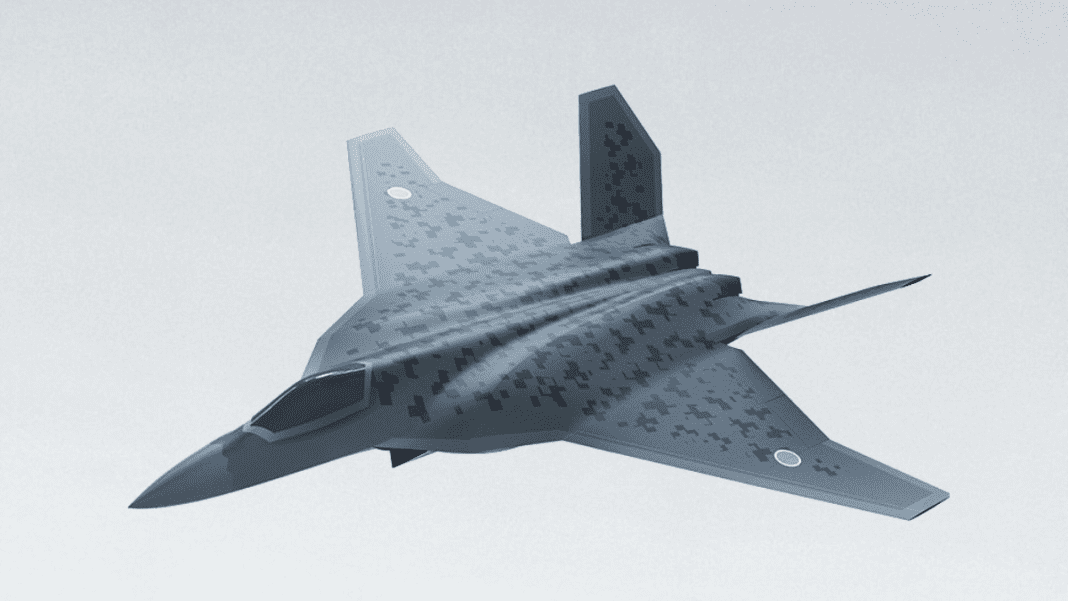Japan has released new details about its plan to develop advanced unmanned aerial vehicles (UAV s) that will fly alongside crewed fighter jets as “loyal wingmen” under the 2035 GCAP program. A new defense report explains that these UAVs are meant to boost air power, improve mission safety, and help protect pilots during high-risk operations.
Growing Need for Advanced UAVs and Air Teamwork
Japan is developing new UAVs that will work alongside its next-generation fighter jets through a system called Crewed-Uncrewed Teaming (CUM-T). In this setup, a human pilot leads the main jet while UAVs support with tasks like surveillance, targeting, and handling dangerous missions. These UAVs will act as smart robotic partners that help protect the pilot.
The project is considered important as nearby countries continue to grow their air forces. By pairing jets with UAVs, Japan aims to boost its air power without relying on a large number of crewed aircraft. The concept design phase will officially begin in 2026, backed by a 4.9 billion yen budget to shape how the UAVs will fly, gather information, and operate in combat.
Hostile patrols at Senkaku — China storms island waters moments after Japan’s Taiwan stand
Artificial intelligence will play a major role, allowing the UAVs to make fast decisions and perform some missions independently. The evaluation report notes that these UAVs are expected to track threats, scan wide areas, support pilots during combat, and take on high-risk tasks, helping reduce casualties during future conflicts.
Why Japan Says It Must Move Quickly on UAVs
Japan’s newly released report explains why the country must speed up the development of these UAVs. Two major reasons are highlighted.
First, Japan wants to avoid delays. In previous aircraft development programs, it has sometimes taken many extra years to finish crucial work. Since the UAVs must be ready to deploy by 2035—when the next-generation fighter jet arrives—the Ministry of Defense says the design phase cannot wait.
Second, technology related to UAVs and collaborative combat aircraft is advancing extremely fast around the world. Many countries have already tested similar “loyal wingman” UAVs, and some have even started using them. If Japan does not move quickly, it could fall behind.
Economy reels as Washington’s tariffs bite — Japan records first contraction in 6 quarters
To address this, Japan plans to complete the early design work for its UAVs by fiscal year 2028. After finishing this phase, engineers will begin building prototypes and conducting large-scale tests.
The report also states that Japan has not yet decided the total cost of the full UAV project. Officials will estimate it after completing the design stage and discussing possible cooperation with other countries. Japan is also exploring ways to reduce costs, including using improved commercial systems instead of developing every part from scratch.
The defense agency believes the early launch of this UAV effort will help Japan build strong technical skills. This is especially important because the country wants to contribute meaningfully to any future international projects in the UAV field.
Growing International Partnerships
Although Japan is focused on building its own UAV capabilities, it is also seeking support through international partnerships. These collaborations help reduce costs, speed up development, and allow Japan to share lessons with trusted allies.
Japan and the United States already have an agreement to work together on advanced artificial intelligence for UAVs. This partnership began in 2023 and continues to expand. The new UAVs will rely heavily on AI for situational awareness and flight decision-making, making this cooperation important.
In 2024, Japan also signed a contract with the Japanese subsidiary of a major aerospace company to help with simulation testing for the UAV program. Simulations allow engineers to test how the UAVs behave in different conditions before building real prototypes.
More recently, Japan has expanded its cooperation to include Australia. The two countries agreed to work together on technologies related to collaborative combat aircraft, including the well-known MQ-28A Ghost Bat. This UAV is used by Australia as a loyal wingman and is designed to support crewed fighter jets during multi-mission air operations.
Japan sends bold warning to China — Self-Defense Forces hold rare naval drills near Taiwan
Japan’s Air Self-Defense Force will observe Ghost Bat flight tests in 2026. This hands-on learning experience will help Japan understand how large UAVs operate in real missions.
These partnerships show that Japan sees international cooperation as a key part of building advanced UAVs. By working with trusted partners, Japan can strengthen its own research and add new skills that will be important for future air-defense efforts.
The new evaluation report shows that Japan is moving steadily toward creating powerful and intelligent UAVs that will work alongside the country’s next-generation fighter jets by 2035.

